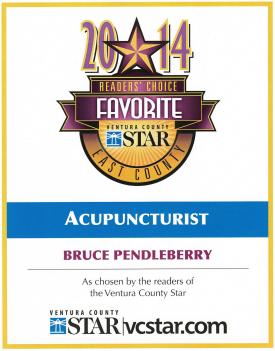Asian Bodywork Therapy is a form of medical massage that focuses on the energy pathways (channels) of the body, and the gateways into them (points). It is based on the same theories that underlie Acupuncture.
There are dozens of different forms of Asian Bodywork. Each one has its own diverse techniques and heritage. There are styles from China, Japan, Korea and other countries throughout the Far East. They all share a similar foundation in theory and philosophy; they differ mostly in technique. Most forms of Asian Bodywork Therapy include manipulation of the joints or specific points along the energy channels of the body, to remove excess or “old” static Qi and Xue and to promote Qi and Xue flow in a area that is deficient or lacking in this nourishment.
Below is a more detailed view and explanation of Tui Na, one of the dominant styles in China.
Tui Na: Chinese Medical Massage
Tui Na is a Bodywork Therapy that has been used in China for 2,000 years. It uses the traditional Chinese medical theory of Qi and the flow of Qi through the meridians as its basic therapeutic orientation. Through the application of massage and manipulation techniques, Tui Na seeks to establish a more harmonious flow of Qi through the system of channels and collaterals, allowing the body to naturally heal itself.
Tui Na methods include the use of hand techniques to massage the soft tissue (fascia, muscles and tendons) of the body, acupressure techniques to directly affect the flow of Qi and Xue, and manipulation techniques to realign the musculoskeletal and ligamentous relationships (bone-setting). External herbal poultices, compresses, liniments, and salves are also used to enhance the other therapeutic methods.
Tui Na has a variety of different systems that emphasize particular aspects of these therapeutic principles.
The main schools in China include:
- Rolling method school which emphasizes soft tissue techniques and specializes in joint injuries and muscle sprains.
- One finger pushing method school which emphasizes techniques for acupressure and the treatment of internal diseases.
- Nei Gung method school which emphasizes the use of Nei Gong Qi energy generation exercises and specific massage methods for revitalizing depleted energy systems.
- Bone setting method school, which emphasizes manipulation methods to realign the musculoskeletal and ligamentous relationships and specializes in joint injuries and nerve pain.
In a typical session, the patient, wearing loose clothing and no shoes, lies on a table or floor mat. The practitioner examines the specific problems of the patient and begins to apply a specific treatment protocol. The major focus of application is upon specific pain sites, acupressure points, channels, fascia, muscles and joints. Advanced Tui Na practitioners may also use Chinese herbs to facilitate quicker healing. Sessions last from 15 minutes to 1 hour, depending on the specific problems of the patent. The patient usually feels relaxed but energized by the end of the treatment.
Tui Na is now being popularized in this country as a powerful therapeutic extension of traditional western massage methods. Tui Na’s simplicity and focus on specific problems, rather than a more generalized treatment, make it both an excellent alternative and/or extension of the Swedish-style massage. By utilizing treatments of shorter duration, it can be used in a variety of settings, including home, office, clinic or hospital. It is well suited for the professional massage therapist or the active, health conscious individual.
History
Tui Na dates back to the Shang Dynasty of China, 1700 B.C. Oracle bones show that Tui Na massage was used to treat children’s diseases and digestive complaints in adults. By 600 B C. Tui Na was included in the Imperial Medical College as a separate department. Tui Na flourished throughout China until the Qing Dynasty where it was suppressed along with other Chinese cultural arts. Following the Communist revolution, Tui Na was restored along with other traditional medical arts and was included in the creation of the current system of Traditional Medicine Colleges.
Currently, Tui Na is taught as a separate but equal field of study in the major traditional Chinese medical colleges. Tui Na doctors receive the same demanding training as acupuncturists and herbalists and enjoy the same level of professional respect.
Benefits, Limitations, Contraindications
Tui Na is well suited for the treatment of specific musculoskeletal disorders and chronic stress-related disorders of the digestive, respiratory and reproductive systems. Effective treatment protocols have been tested in a practical setting. Tui Na is not especially useful for those seeking a mild, sedating and relaxing massage since it tends to be more task focused than other types of bodywork. Contraindications include conditions involving fractures, phlebitis, infectious conditions, open wounds, and lesions.



